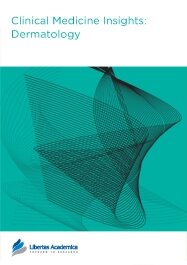

Publication Date: 09 Feb 2009
Journal: Clinical Medicine Insights: Dermatology
Citation: Clinical Medicine: Dermatology 2009:2 1-3

Due to years of sophisticated research on T cell function, many dermatologists have viewed atopic dermatitis (AD) largely as an inflammatory disorder of TH1/TH2 imbalance. Hence, therapy has largely consisted of topical immunomodulators and/or steroids. The imposition of “black box” warnings about the potential toxicity associated with prolonged use of the immunosuppressive drugs, tacrolimus 0.1% or 0.3% ointment (Protopic®, Astellas Pharma U.S., Inc., Deerfield, IL) and pimecrolimus 1% cream (Elidel®, Novartis, Basel, Switzerland), as well as legitimate concerns about the adverse side effects of potent topical steroids, has stimulated a search for alternate forms of therapy. Recent genetic studies point to the primary role of a defective barrier to water loss and microbial invasion in the provocation of AD, creating a rationale for ‘barrier repair’ therapy. This approach utilizes topical applications of specific combination of the three (3) epidermal lipids that comprise the epidermal permeability barrier in a ratio (ceramide-dominant) that corrects the biochemical abnormality in AD.1,2 We review here both recent concerns about the topical immunomodulators, as well as the rationale for barrier repair therapy.
PDF (228.97 KB PDF FORMAT)
RIS citation (ENDNOTE, REFERENCE MANAGER, PROCITE, REFWORKS)
BibTex citation (BIBDESK, LATEX)

I highly recommend publication in Libertas Academia journals. The entire submission, review and publication process for our article in Clinical Medicine Insights: Dermatology was easy and quick. The reviews were very professional and helpful and the publication fees were reasonable. We also appreciate that our article is available online free of charge to anyone interested in it.

All authors are surveyed after their articles are published. Authors are asked to rate their experience in a variety of areas, and their responses help us to monitor our performance. Presented here are their responses in some key areas. No 'poor' or 'very poor' responses were received; these are represented in the 'other' category.See Our Results
Copyright © 2014 Libertas Academica Ltd (except open access articles and accompanying metadata and supplementary files.)
Facebook Google+ Twitter
Pinterest Tumblr YouTube